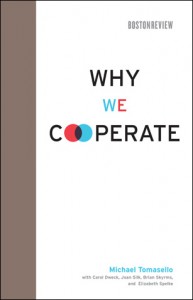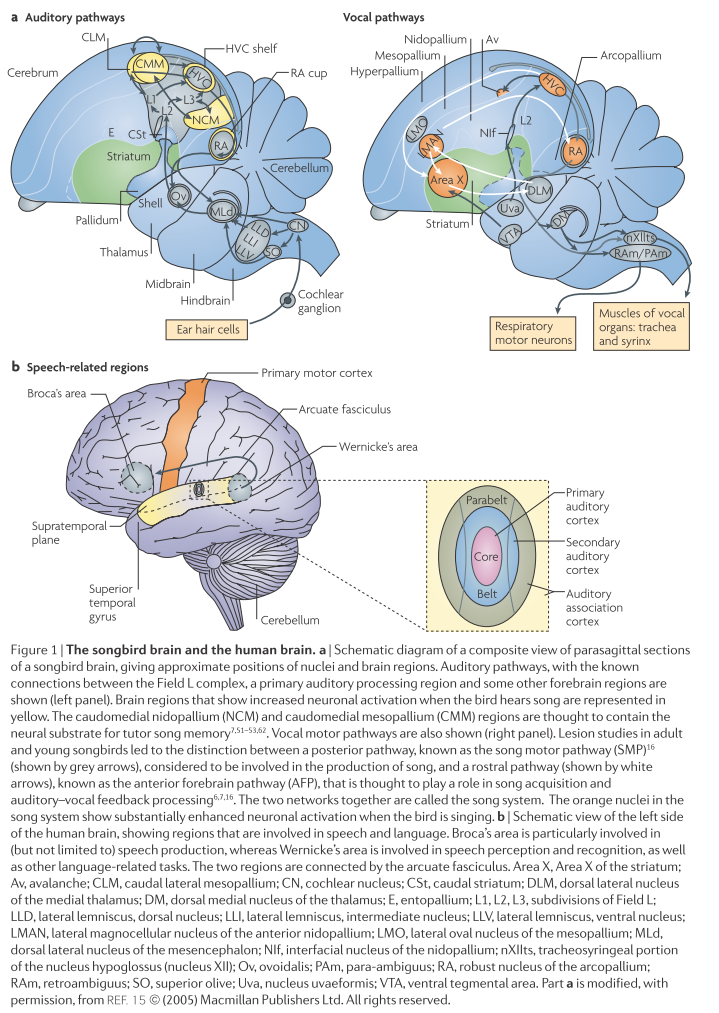Williams Syndrome (WS) is a rare genetic condition which manifests itself as a severe deficit in development and IQ, however it leaves language ability largely unaffected and is, as a result, often cited as evidence for a specific language module (Bellugi et al. 1988), as language can be unaffected despite other mental deficits. This argument has a strong bearing on the evolution of language as it contributes to the debate of whether language evolved for language’s sake or whether it is as the result (an exaptation or spandrel) of general cognitive capability in other areas.
Work by Brock (2007) has shown that the language abilities of people with WS could be predicted by non-linguistic abilities (You could probably argue this of the language abilities of anyone, but that’s another blog post). It has also been shown that language acquisition in WS children is behind that of normal children. Many studies have shown deficits in WS children’s language (reflexive pronouns, grammatical morphems, verb raising, negative wh-sentences) which are generally put down to normal-but-delayed language acquisition as people with the condition will usually pick these grammatical rules up by adolescence.
Perovic and Wexler (2010) suggest that if some grammatical knowledge is shown not to be present in WS children by adolescence, (as is apparently the case with verb raising) then this is evidence to suggest not just ‘normal-but-delayed’ language, but in fact, ‘atypical’ language.
Perovic and Wexler (2010) did a study on 26 children with Williams Syndrome between the ages of 6 – 16. They were tested using picture matching comprehension tasks on passives featuring ‘actional’ verbs and ‘psychological verbs’. The results confirmed what has been seen in previous studies, that WS children can process actional passives with ease, but also showed a previously unreported deficiency in their ability to process psychological verbs.
They also found this deficiency in 5 adult sufferers of WS.
So it seems that the linguistic ability of people with WS is not so exceptional after all.
In the discussion of this paper it is explored as to whether these differences could just be down to the general cognitive impairments which people with developmental problems face. The fact that this question even needs to be discussed is evidence to contradict a ‘language module’ theory. That is that if the deficit in WS children’s passive is a specifically linguistic one then WS can no longer be used as evidence for affected intellectuality but unaffected language, and on the other hand, if it is as a result of general cognitive deficiency, then this is evidence to suggest that it is general cognitive ability that results in much, if not all, linguistic ability in the first place.
References
Bellugi, U. Marks, S. Bihrle, A. and Sbo, H. (1988) Dissociation between language and cognitive functions in Williams Syndrome. In D. Bishop and K. Mogford (Eds.) Language developement in excpetional circumstances (pp. 177 – 189). Hillsdale, NJ: Erlbraum
Brock, J. (2007) Language abilities in Williams syndrome: A critical review. Development and Psychopathology, 19, 97-127.
Perovic A, & Wexler K (2010). Development of verbal passive in Williams syndrome. Journal of speech, language, and hearing research : JSLHR, 53 (5), 1294-306 PMID: 20631227



